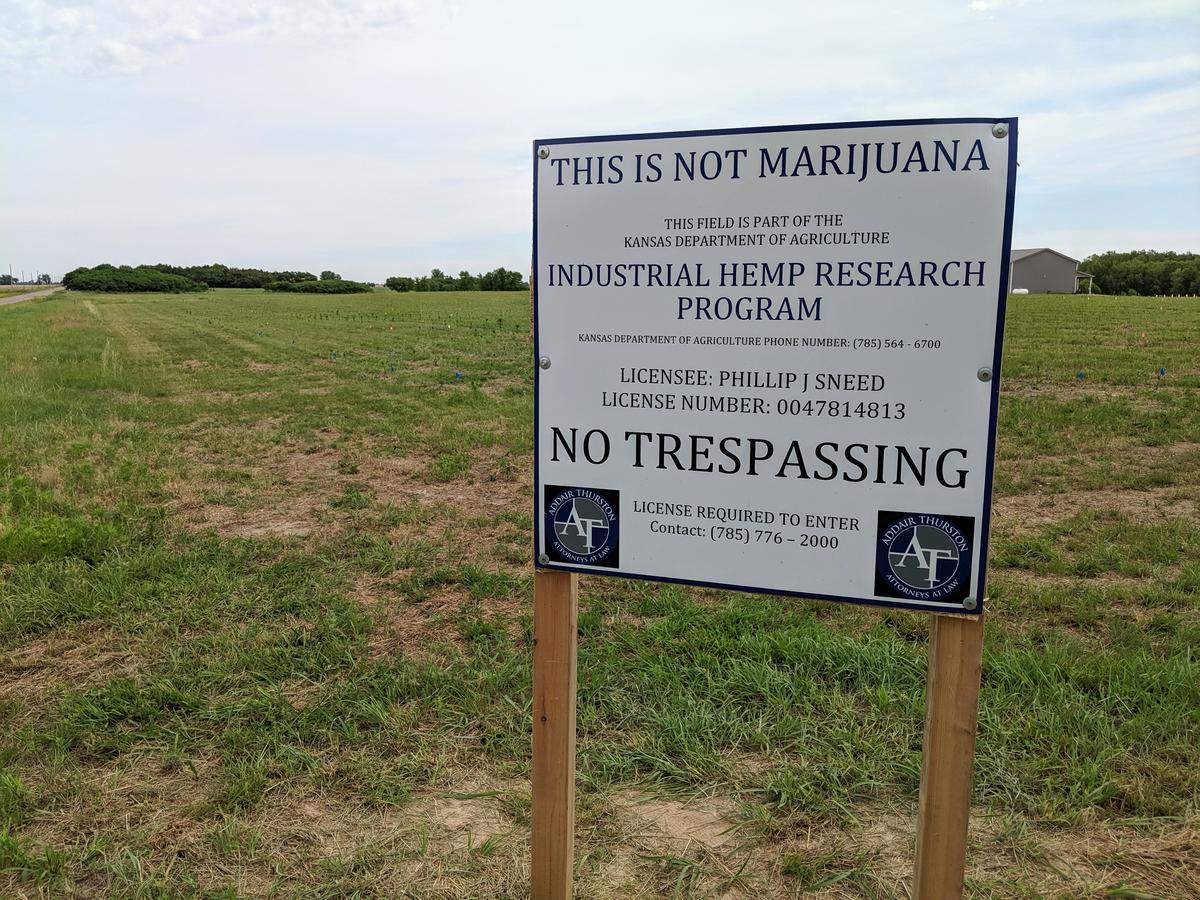
P.J. Sneed checks on some of his hemp plants waiting to be planted at his farm in Plevna, Kansas. Brian Grimmett / Kansas News Service
By BRIAN GRIMMETT
Kansas News Service
PLEVNA, Kansas — P.J. Sneed walks through his small greenhouse in central Kansas checking on rows and rows of small hemp plants just waiting to be put into the ground.
The plants inside the greenhouse near Plevna look rather healthy. Problematically, they look better than the plants in the few acres he’s already planted just outside of the greenhouse.
“Day One, we planted an acre and a half,” he said. “Huge storm came through and it blew probably half the plants just over or out of the ground.”
But looks can be deceiving. The roots of the hemp plants sitting indoors have run out of room in the small plastic containers they sit in, the same kind of containers you’d find flowers sitting in at a nursery.
That’s because these plants should have been planted a few weeks ago. But like farmers of more traditional crops, Sneed’s been delayed by the wet weather that’s kept him from planting hemp in his fields.
People who signed up for an industrial hemp test program got licenses based on research proposals. But this year’s unusual weather could skew the results of the studies, impacting the kind of information the state has to gauge the prospect of growing hemp in Kansas.
State officials want to better understand the potential for the specialty oilseed crop, colloquially known as industrial hemp. The scientific name for the plant is cannabis sativa, and it’s the same plant that marijuana comes from.
Lawmakers approved the pilot program last year. Each grower licensed to participate in the program is studying some aspect of hemp cultivation.
Some are looking into how much water is needed to grow hemp, while others are investigating how industrial hemp fits into regenerative agriculture practices such as using it as a cover crop or how it impacts soil health. Growers are also providing detailed planting and harvesting information to the state.
So far this year, the state has received 392 applications and issued 248 — 192 of those approved licenses are for growers.
In total, 5,200 acres in 71 counties have been approved for growing hemp, even though it’s likely total planted acres won’t be close to that.
As of July 1, 680 acres of hemp have been planted in the state. That number is expected to grow significantly in the next few weeks as the ground across the state begins to dry out enough for planting that first planned to happen weeks earlier.
The state will issue a report at the end of the year analyzing the data gathered from all the projects. While the extraordinary weather will likely impact results, it’s too early to know how much.
“Here in Kansas … we kind of have extremes from one season to another season, and, at this point, precipitation plays a large factor,” said Braden Hoch, a hemp specialist for the Kansas Department of Agriculture.
Rain has delayed planting for some farmers, but the variety of hemp, and what the grower hopes to use it for, will also play a large role in how successful this year could be.
Hemp plants are generally grown for one of three things — its seed and grain, its fiber, or its floral material.
CBD oil typically comes from the floral material. Varieties grown for their floral material typically only need a 90-day period from planting to harvest, meaning there’s still time to get those plants in the ground and still have a good chance at a successful harvest.
Hoch said the state is ultimately trying to gather data to show whether or not hemp is a viable alternative crop for Kansas farmers, and this year’s trial could help build that case.
But even with the optimism, some hemp farmers, such as Sneed, still worry plenty about how the wet weather stunted the growth of their plants.
“This year’s crop, as wet as we are, will be affected across the board,” Sneed said. “Whether it’s CBD level or fiber level.”
Brian Grimmett reports on the environment, energy and natural resources for KMUW in Wichita and the Kansas News Service. You can follow him on Twitter @briangrimmett or email him at grimmett (at) kmuw (dot) org. The Kansas News Service is a collaboration of KCUR, Kansas Public Radio, KMUW and High Plains Public Radio focused on the health and well-being of Kansans, their communities and civic life.

